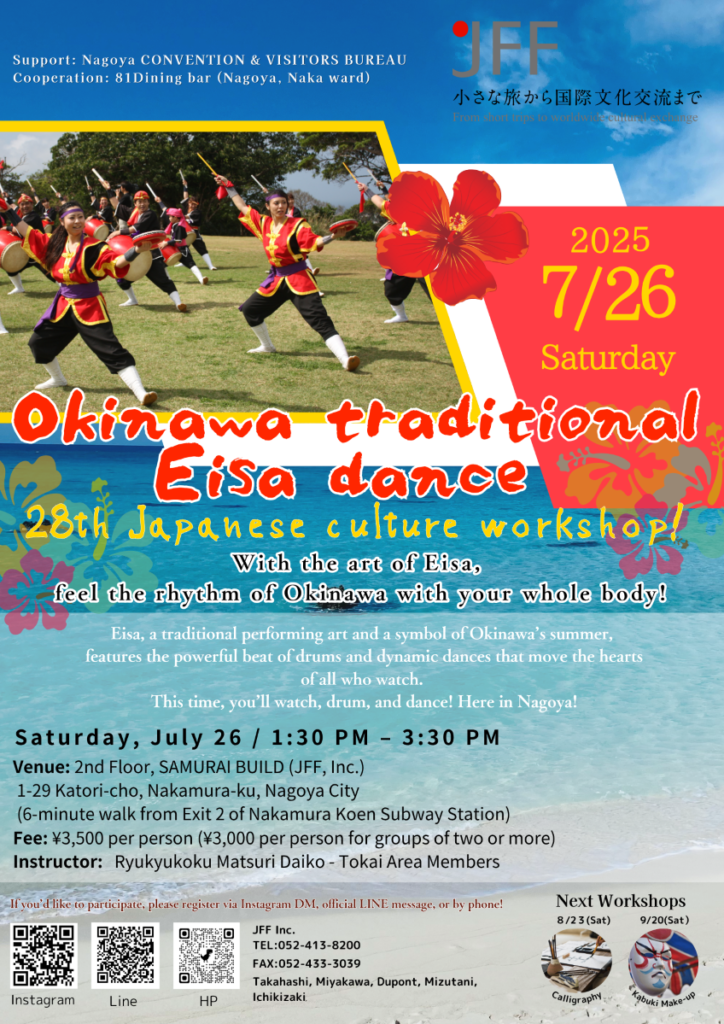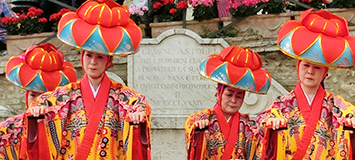SAMURAI BUILD 2F,
1-29 Katori-cho, Nakamura-ku,
Nagoya, Aichi Prefecture, Japan
Japanese Drum 【Wadaiko】 Experience
Japanese Drum 【Wadaiko】 Experience 🥁
Hi everyone 👋😀
“Japanese Drum【Wadaiko】Experience” is the theme of our sixth “Experience Japan Culture Firsthand”.
We had the honor of having Mr. Tetsuro Suzuki as our instructor. He is the leader of the musical group “TSUWAMONO-Sai” consisting of many players and they perform traditional Japanese musical instruments in Aichi Prefecture. Four people from “TSUWAMONO-Sai” participated in our event, included Mr. Tetsuro Suzuki.
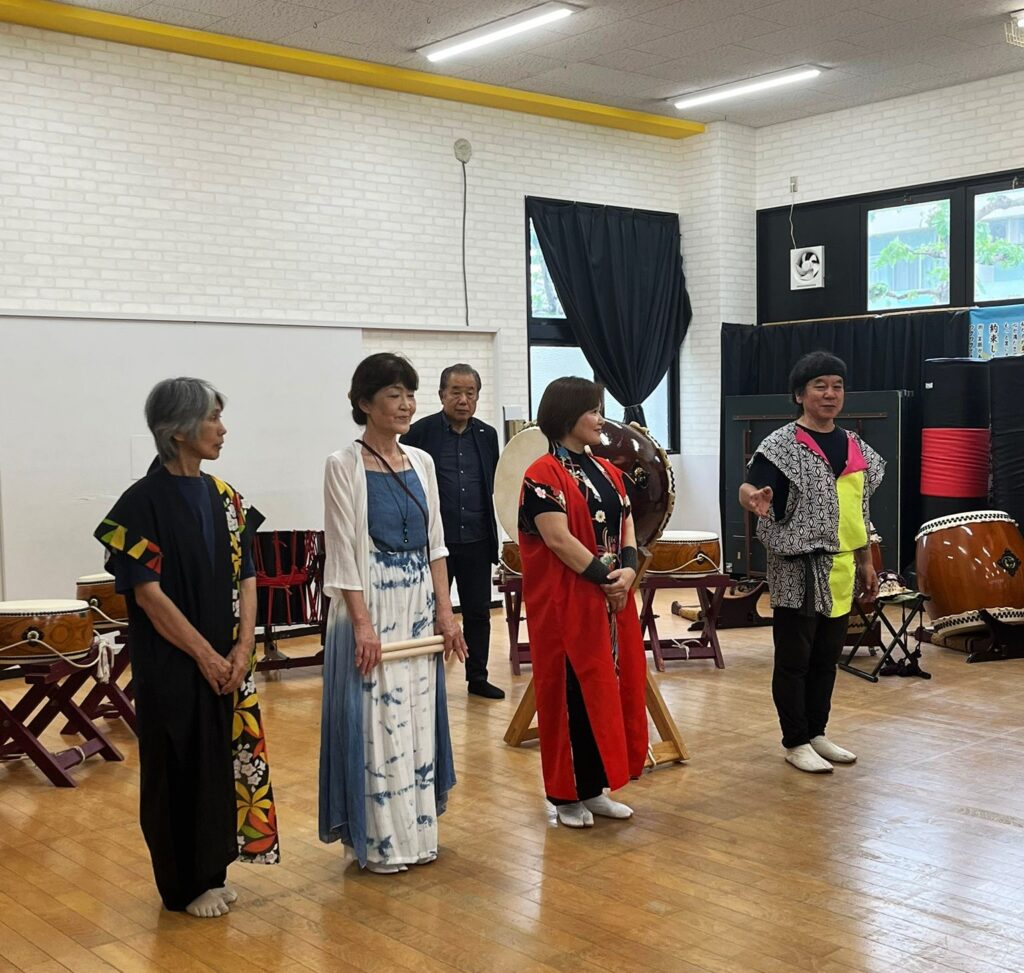
Wadaiko, a bridge between Gods and Man
和太鼓: Wadaiko
和 (Wa) stands for “peace and harmony”. Japanese chose this word in order to represent everything related to Japan.
太鼓 (Daiko) stands for “drums”.
“Wadaiko” (abbr. “Taiko”) is a generic name referring to Japanese traditional drums and it is a must-have instrument at Festivals as well as during other events.
The origins of “Wadaiko” date back to Kofun Period (500 BC) and it plunges its roots in Shintō, the Japan’s ancient indigenous religion. In fact, back then, Japanese Drums were used as a way to communicate with the Gods (Kami) as it was thought that “Wadaiko” were the only earthly sounds that the Gods could hear 😮
It is said that during rituals, the loud drumming dispelled evil spirits and pests from the rice fields, moreover people used Japanese drums in their prayers of thanksgiving for the rain and for a rich harvest 🌧🌱
Furthermore, during the Sengoku Period (also known as “The Warring States period”, from 1467 to 1615) drums were used for issuing commands as well as motivating and leading their armies into battle as the drum beat represented as the heartbeat of the soldiers ❤️🔥✊
I was so surprised at the beginning because while looking at the performance, I could feel the powerful Wadaiko “DON” sound vibrations in my whole body. Amazing‼️
Everyone from children to adults can enjoy Wadaiko
Not only Japanese, but also Filipinos coming from Okazaki took part in our “Japanese Drum【Wadaiko】Experience”, it was such a fullfilling day 🙇🙇♀️🙇♂️
We were so happy that foreigners participated actively in this event in order to learn more about Japan and Japanese culture🗾🥰

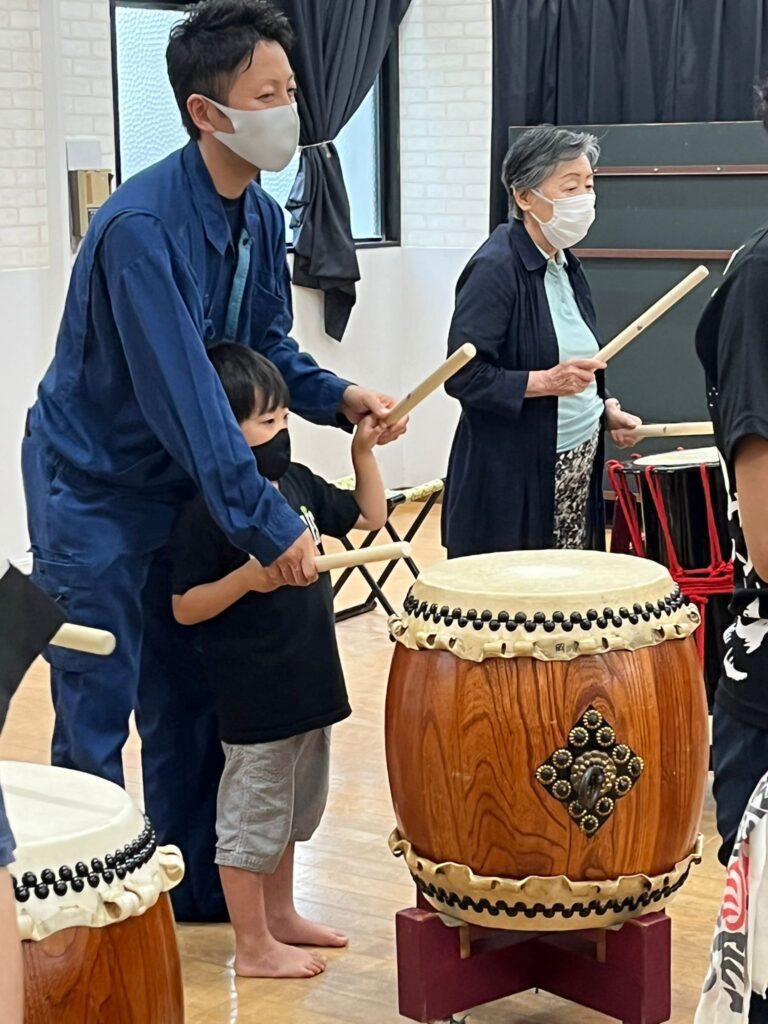
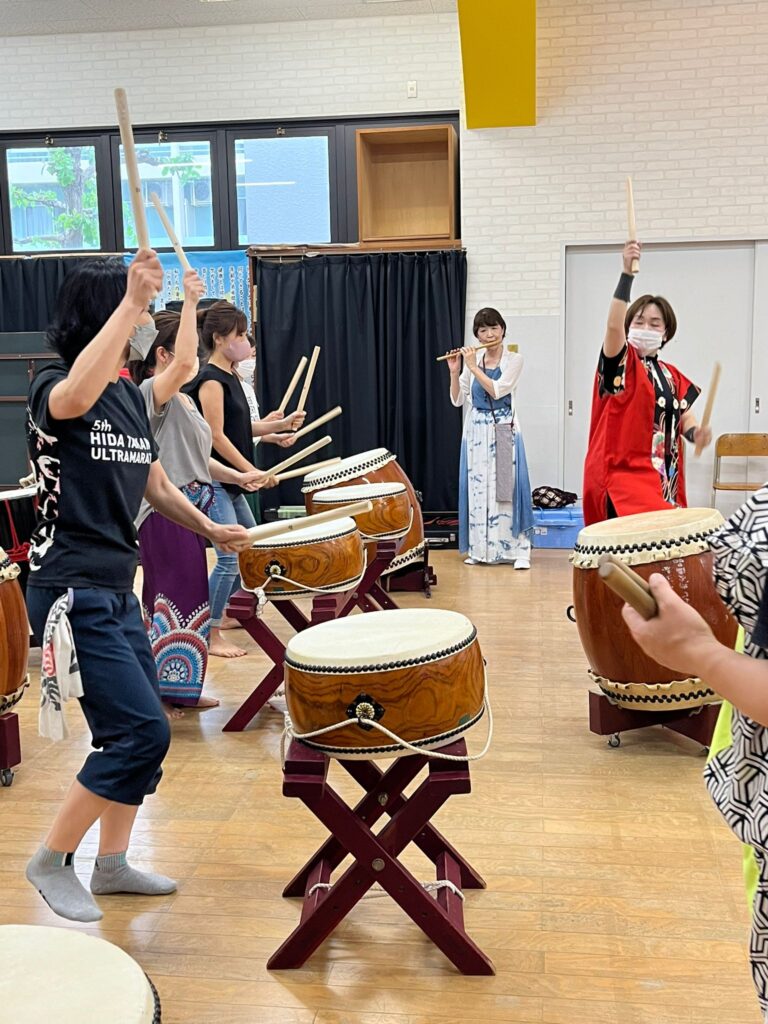
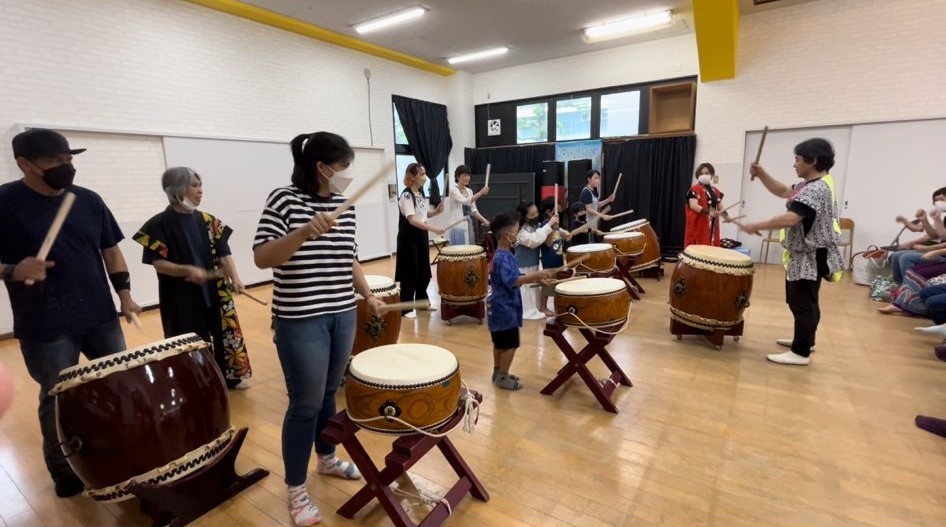
Firstly, we played very slowly so we could memorize each beat pattern and concentrate on the movements coordination and then, gradually, we increased the speed. In the end we were so happy and satisfied to play “Wadaiko” together and to be at the same pace a our instructor after learning the basics 😎🎉
➡️Did you know that “Wadaiko Drumming” can be an excellent workout❓The entire use of your body and the wide movements while hitting the drum are a perfect cardio workout 💪
A lot of【Wadaiko】🎵🤩🎶🥁
Did you know that there are many different types of Wadaiko?
Let’s take a closer look at the ones that Mr. Tetsuro Suzuki brought for this event!
Nagado Daiko (Long-Body Drum)

“Nagado Daiko” is the most popular type of the Taiko and it is carved from a single, solid piece of wood. It’s also known as “Miya Daiko” because it is played in Shinto Shrines (Miya means “Shrine”).
It has a very deep and low sound and it can be played standing or horizontally to be played by two at the same time.
In spite of its name, the “Long-Body Drum” is divided according to the size and material, and weighs 15 kg to 110 kg! There are two metal handles on each side for easy transport.
The price also varies.
Okedo Daiko (Barrel Drum)

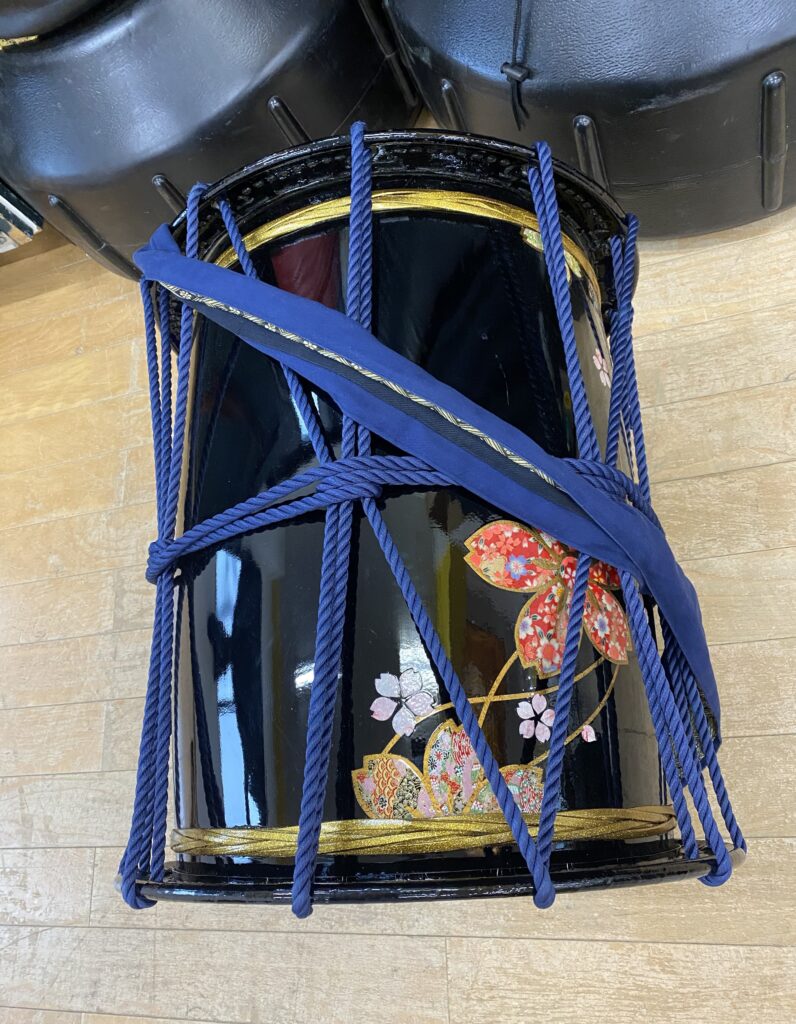
Japanese pattern)
“Okedo Daiko” has a long wooden body and it is way cheaper and lighter than “Nagado Daiko”.
Moreover, it differs in price, size and material. Its weight is about 3kg-10kg and it produces a light slapping sound.
As it can be carried easily, you can slung it on your shoulder while performing by using a strap.
Its particularity is that the pitch of the “Okedo Daiko” can be tuned by adjusting the tension on the rope.
Shime Daiko (Tensioned Drum)
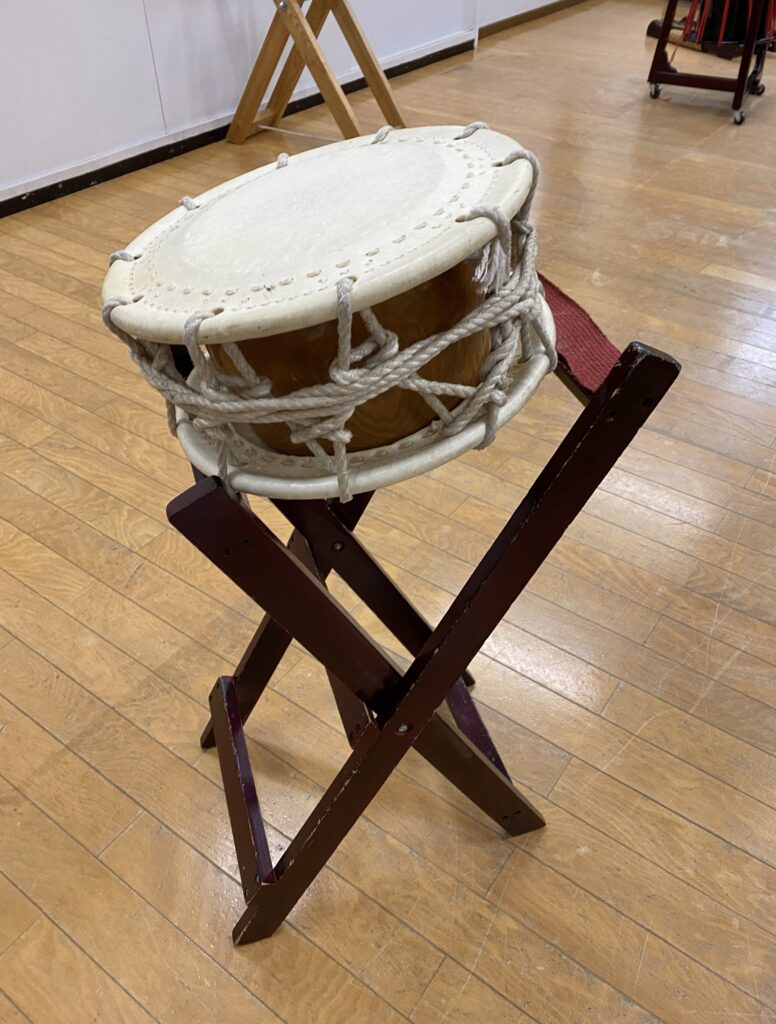
“Shime Daiko” is a small high-pitched drum and, as you can see from the photo, the membrane is tied with rope or bolt along the body.
As it is very light to hit, it can be played with thin drumsticks.
Hira Daiko (Flat Drum)
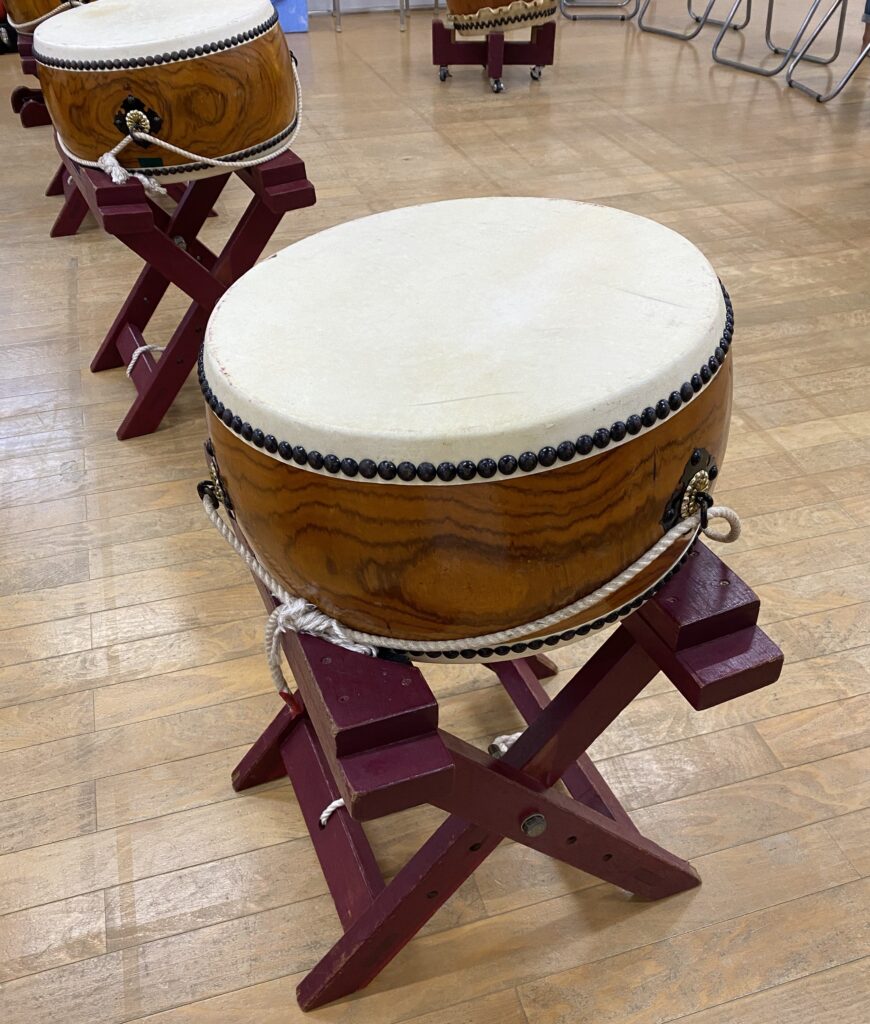
“Hira Daiko” (Flat Drum) has a short and flat body.
Moreover, it has the same diameter as “Nagado Daiko” but “Hira Daiko” produces a lighter and higher sound. This is why it is often used together with Shime Daiko.
Have you ever heard about a trumpet shell❓😯
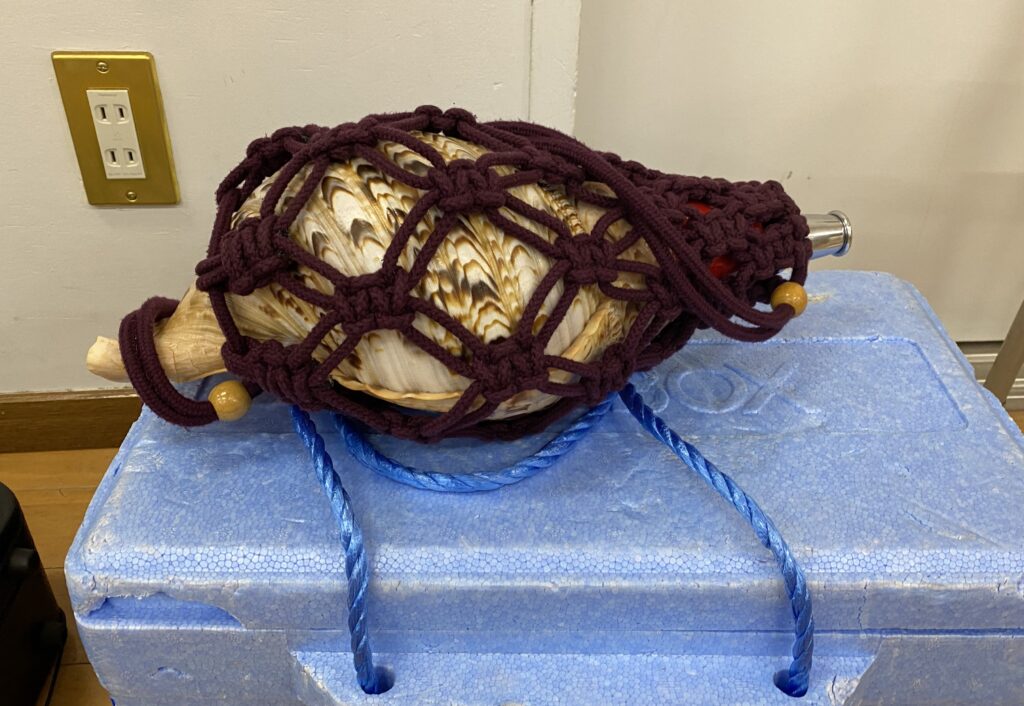
I was so surprised because that was the first time I had seen a trumpet shell! The sound is very powerful, in fact it was used by Buddhist monks or by Samurai to signal and communicate on the battlefields.
Mr. Tetsuro Suzuki‘s words:
“The sheet music is a very important element while playing, but I am not going to use it today!
After all it is very important to see, listen, imitate, and remember with your body 😁
It may be difficult at first but there is no need to worry because soon the rhythm will become familiar to you.
So everyone from adults to children can enjoyed Wadaiko together ✨”

